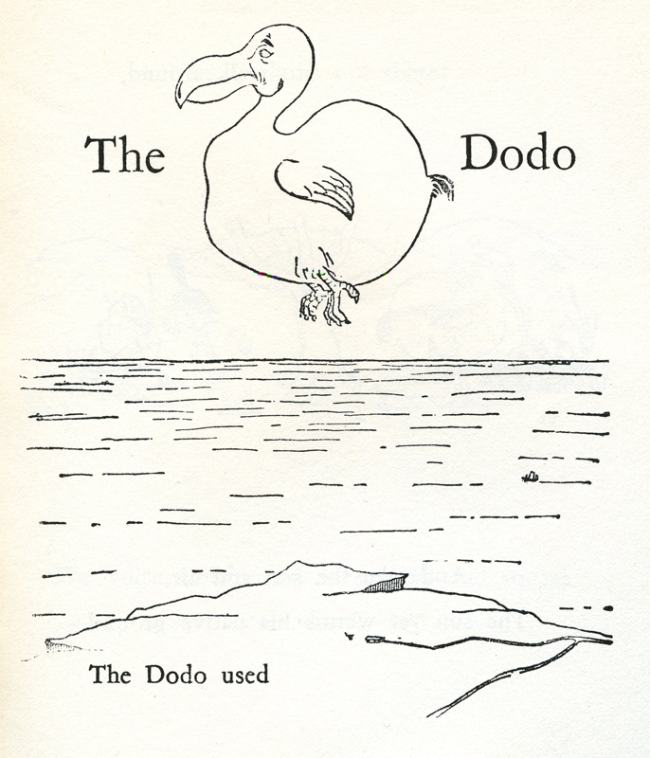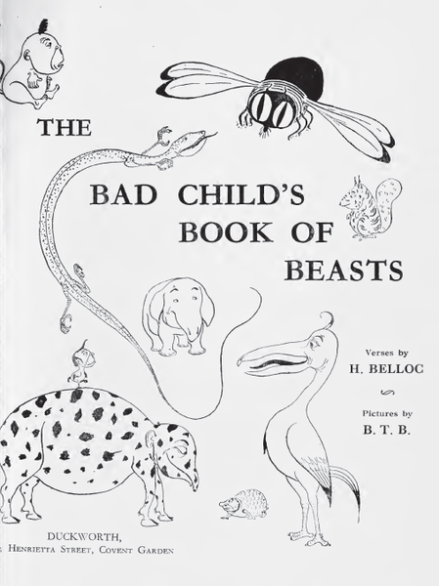We had a great day here in Trinity hosting St Enda’s, The Marist School and City Quay on their triple trip to the college on Wednesday January 15th. There were writing and illustration workshops, tours of the Long Room and the Book of Kells (above) and a peek at some of the precious books in the Pollard collection.
Librarian Lydia Ferguson showed us many illustrations of ‘creatures great and small’ in Pollard, to give us some inspiration on the theme for the books you’ll be writing this year. We saw mythological creatures, of course, such as dragons, including the ones I posted here.
We also saw real creatures, the kind that are still to be found on the earth, and the kind that are long vanished, such as the Dodo.
This particular Dodo was drawn by Basil Temple Blackwood, who signed himself B.T.B., to illustrate one of the funny poems about animals in The Bad Child’s Book of Beasts, written by Hilaire Belloc and first published in 1896.
No wonder Blackwood shortened his name to ‘B.T.B’. His full name was Lord Ian Basil Gawaine Temple Hamilton-Temple-Blackwood, not an easy name to shout across the playground. He was born in Northern Ireland in 1870, in a place called Clandeboye, which is now part of Bangor, County Down. Clandeboye is from the Irish Clann Aodha Buí; ‘the family of yellow Hugh’. (Hugh wasn’t yellow because he was a coward – it was the colour of his hair, as Aodh Rua would be red-haired Hugh.)
Basil came from a family very well-connected with the British establishment, at a time when Britain ruled all of Ireland. He spent part of his childhood in Canada, where his father was Governor General. Basil met Hilaire Belloc at Oxford University, though ‘B.T.B.’ himself never graduated from Oxford. He later studied Law and became a barrister, but continued to draw pictures for Belloc’s books. Basil worked for the British government in South Africa and Barbados, and ended up fighting in World War 1. He was badly wounded at the Battle of Mons in Belgium in October 1914 and was sent back home to recover. Before he was fit to go back to the army, he worked as Private Secretary to the Lord Lieutenant of Ireland, based in Dublin Castle, and was there in 1916 when the Easter Rising took place. He went back to the war front later that year and was killed in action near Ypres in France on July 4th 1917.






